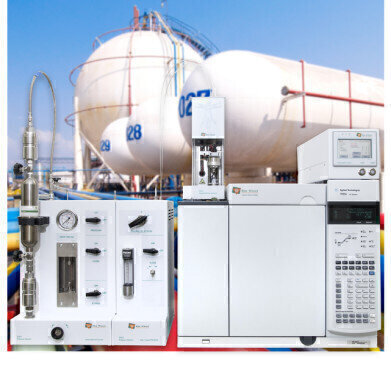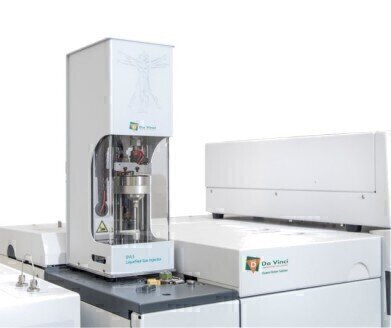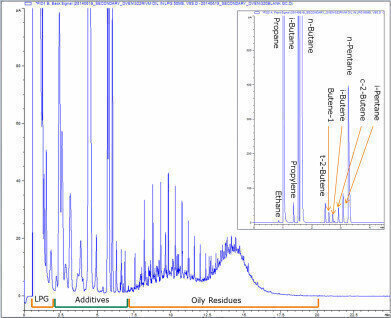Analytical Instrumentation
Safe Sampling & Fast Analysis of Liquefied Gases
May 15 2019
The analysis of impurities & contaminants in liquefied gases is an analytical challenge. Current test methods are labor intensive and present a safety risk due to the required evaporation of large volumes of liquefied gas. To resolve this Da Vinci developed the Liquefied Gas Injector: a gas chromatographic method for the safe sampling and fast analysis of impurities in liquefied gases.
Sampling Technique
The sampling of the Liquefied Gas Injector (LGI) is based on the proven fuel direct injection technique used by the automotive industry to inject fuel into the automotive engine combustion chamber. The injector is connected to a standard GC injector needle, which is inserted into a GC injection port. Solenoid activation transfers the pressurised liquid sample directly onto the GC inlet.
An essential part of the LGI solution is the Pressure Station, that is used to maintain the pressurised sample in a liquid phase under constant pressure during the injection. A sample cylinder is mounted on the Pressure Station using quick connectors.
For liquid samples the Pressure Station adds high pressure Nitrogen to the sample cylinder and controls the outlet pressure and flow. Optionally the Pressure Station can also be configured with a vaporiser to control the sample evaporation before injection. The waste sample is vented to a central waste system to ensure laboratory safety.
GC Analysis
The Liquefied Gas Injector (LGI) has been standardised as ASTM method D7756 and EN method 16423 for the analysis of oily residues in liquefied petroleum gases by gas chromatography. The LPG specification standard D1835-16 lists the LGI method ASTM D7756 for the residue analysis.
The chromatographic analysis after the sample introduction is based on boiling point separation of the oily residues and contaminants. The total residue is quantified using area summation of the components in the range of C10 to C40. The result is reported in parts per million (w/w) of residue in LPG.
Adapting the hardware configuration extends the analysis of oily residues in LPG to a wider application range. The full application range of the DVLS Liquefied Gas Injector includes the following analyses:
- Oily residues and light contaminants in LPG (ASTM D7756, EN 16423)
- Hydrocarbon composition of LPG (ASTM D 2163, ISO 7941)
- Sulfur compounds in liquefied petroleum gases
- Elemental Sulfur in LPG
- Desulfurisation additives in LPG: DIPA, MEA & DEA
- Inhibitors, additives and Dimers in Butadiene: ACN, ρTBC, Butadiene Dimer
- Nitrogen, carbon dioxide, hydrogen sulfide and C1-C36+ hydrocarbons in unstabilised gas condensate
Since its introduction in 2010 the LGI has been successfully used by a global installed base of oil refineries. Contact Da Vinci Laboratory Solutions for more information here.
Digital Edition
PIN 25.2 Apr/May
April 2024
In this Edition Safety - Carbon monoxide toxic and flammable gas detection Analytical Instrumentation - Density: A fundamental parameter at critical stages within the petroleum sector...
View all digital editions
Events
May 05 2024 Seville, Spain
May 06 2024 Riyadh, Saudi Arabia
May 06 2024 Houston, Tx, USA
May 06 2024 Houston, Tx, USA
Canada Gas & LNG Exhibition & Conference
May 07 2024 Vancouver, BC, Canada




















